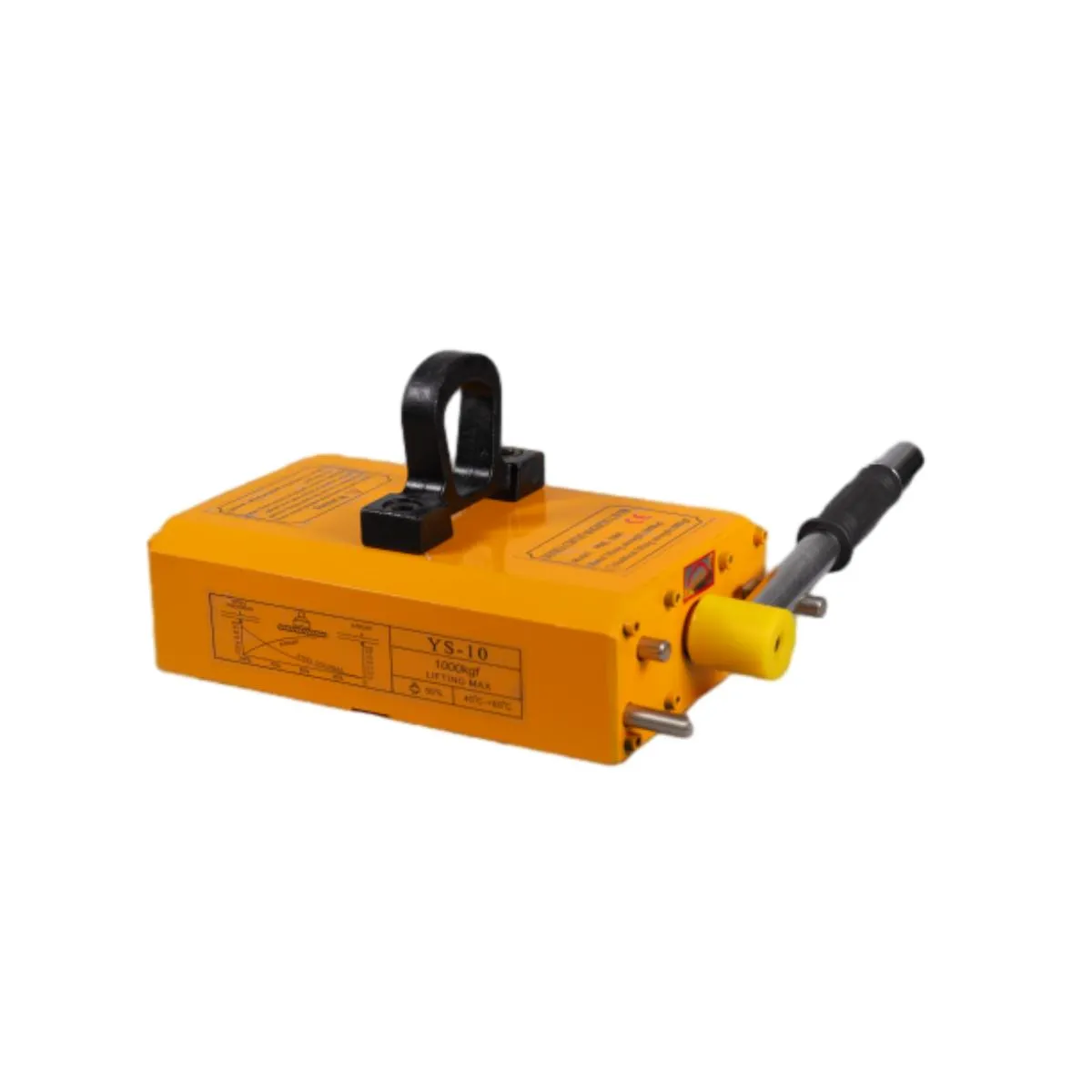lifting magnet with release
Understanding Lifting Magnets with Release Mechanisms
Lifting magnets have become essential tools in various industries, especially in manufacturing and construction, where handling heavy and ferromagnetic materials is a common requirement. These devices leverage the principles of electromagnetism to lift heavy metal objects safely and efficiently. However, as industries evolve, so do the technologies that support their operations. One such advancement is the introduction of lifting magnets equipped with release mechanisms, which enhance both functionality and safety.
What Are Lifting Magnets?
Lifting magnets are devices that generate a magnetic field capable of lifting and securing ferromagnetic materials such as steel and iron. They are widely used in applications such as scrap handling, metal fabrication, and warehouse logistics. The core component of these devices is an electromagnet, which is created by passing an electric current through a coil of wire. When the current flows, a magnetic field is generated, attracting ferromagnetic objects.
Benefits of Lifting Magnets
The primary benefits of using lifting magnets include efficiency and safety. They offer a quick and reliable method to lift heavy loads without the need for slings, chains, or other traditional lifting devices. This not only speeds up operations but also reduces the risk of damage to materials. Furthermore, lifting magnets can be used in confined spaces or awkward angles, where traditional lifting methods may pose risks.
Introducing Release Mechanisms
The addition of release mechanisms to lifting magnets provides significant operational advantages. Traditional lifting magnets can hold materials securely, but releasing them can sometimes be complex, especially under stress. A release mechanism addresses this issue by allowing the operator to disengage the magnet safely and efficiently.
lifting magnet with release

There are several types of release mechanisms in lifting magnets, including manual, automatic, and remote-controlled systems. Each has its unique advantages
1. Manual Release This is a straightforward approach where an operator physically controls the release of the magnet. It typically involves a lever or button that deactivates the electromagnet, allowing the load to drop gently. While simple, this method requires constant operator supervision.
2. Automatic Release In this system, the lifting magnet can be programmed to release the load after a certain operation is complete or when the load reaches a predefined height. This feature enhances productivity as it minimizes the need for manual intervention.
3. Remote-Controlled Release Technological advancements have enabled remote control over lifting magnets. Operators can engage or disengage the magnet from a safe distance. This is particularly beneficial in hazardous environments or when working with very heavy loads, as it enhances safety and allows greater control over the operation.
Safety Considerations
While lifting magnets with release mechanisms improve efficiency, safety should always be a priority. Regular maintenance and inspection of both the magnets and their release systems are crucial to ensure reliable operation. Operators should be trained in the proper use of lifting magnets, including how to engage and disengage the release mechanisms. Providing safety gear, such as helmets and gloves, is also recommended to protect workers during operations.
Conclusion
Lifting magnets equipped with release mechanisms represent a significant evolution in material handling technology. They combine the power of electromagnetism with enhanced safety and operational efficiency, allowing industries to handle heavy loads with confidence. Whether through manual, automatic, or remote-controlled systems, these devices are designed to streamline operations while prioritizing worker safety. As industries continue to innovate, the role of lifting magnets will only become more integral, making them a staple in modern logistics and manufacturing. By understanding and utilizing these advanced tools, companies can maximize productivity while minimizing risk in their operations.
-
Unlock Seamless Relocation with Our Heavy Equipment Moving ExpertiseNewsJun.06,2025
-
Unleash Unrivaled Flexibility with Our Adjustable Gantry CraneNewsJun.06,2025
-
Unleash Heavy-Duty Efficiency with Our Industrial Gantry Crane SolutionsNewsJun.06,2025
-
Revolutionize Steel Handling with Our Magnetic Lifter RangeNewsJun.06,2025
-
Master Equipment Mobility with Premium Machinery Mover SolutionsNewsJun.06,2025
-
Elevate Your Material Handling with Magnetic Lifter TechnologyNewsJun.06,2025
-
YS Permanent Lifting Magnets: The Smarter Way to Handle SteelNewsMay.22,2025
